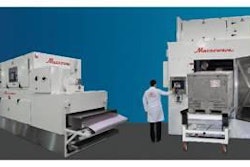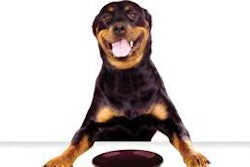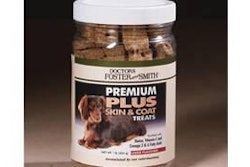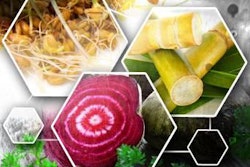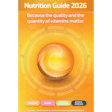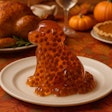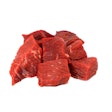Copper sulfate is a very common and effective copper source used in petfoods. There have been some recurrent concerns expressed to customer service hotlines and on some enthusiast web sites that copper sulfate is "toxic" and that it "attacks the heart, liver and kidneys" and that it is "moderately poisonous." These folks are asking that this chemical-sounding name that is near the bottom of the ingredient list be removed. They are very concerned that we are being unwise in our use of this ingredient in their beloved pets' food.
Of course, like most misunderstandings and myths there is a thread of fact underneath. If consumed in excess, copper sulfate can be an issue. But the same can be said for a lot of elements in life, from oxygen and water to dietary components like salt (sodium and chloride), iron, zinc and vitamin A, to name a few. So, is this something we should really be concerned about?
The nutrient copper is a nearly perfect example of the nutritional balance concept. It is essential to health and well-being, but in excess can be toxic. Copper is a vital part of enzymes such as monamine oxidase, lysyl oxidase, ferroxidase and cytochrome C oxidase that catalyze oxidation reactions. These are involved in, among other things, the production of connective tissue, iron metabolism and hematopoiesis (blood cell production), pigmentation in hair coat color through melanin formation, nervous system function, and as a physiological antioxidant in superoxide dismutase. There is also a specific rare autosomal recessive copper storage disease in Bedlington Terriers and some nonspecific hepatopathies in Labrador Retrievers and other breeds associated with an inability to properly eliminate copper. But these are associated with dietary copper in general and not copper sulfate in particular.
The amount of copper in most petfood ingredients is generally small. The highest quantities are found in bran and germ from cereal grains, and organ meats such as liver and kidneys are good sources as well. Despite these few rich sources, the mix of basal dietary ingredients is typically insufficient to meet the animals' needs, which means that supplementation is necessary. Fortunately, the amount needed to "make up the difference" is not terribly large and is considered a "trace" amount. Thus, copper is one of the "trace minerals." For example, the dietary requirement for copper is 7.3 and 5-15 mg/kg diet DM for dogs and cats, respectively (AAFCO, 2014).
Copper sulfate has been the leading source to meet this need for nearly 80 years (Baker and Ammerman, 1995) with no incidents reported for the petfood industry. Copper sulfate occurs in nature as Chalcanthite and may also be described in the old literature as Bluestone, Blue vitriol, Roman vitriol, etc. Commercial sources are synthetically produced by treating copper (II) oxide or copper metal with warm sulfuric acid to yield the blue hydrated cupric pentahydrate salt.
By definition, copper sulfate is the copper salt of sulfuric acid and includes both the anhydrous CuSO4 and the hydrated cupric sulfate pentahydrate CuSO4*5H2O (AAFCO, 2014). The latter is the type most commonly sold, with a copper concentration just over 25%. It is an odorless water-soluble blue crystalline powder or granule and is typically packaged in 25 kg or 50 lb. polypropylene-lined bags.
The concentration of copper from copper sulfate, and other minerals for that matter, is not affected by processing conditions like vitamins or amino acids are. So, what you put into the diet stays in the diet. There are some reports of interactions with ingredients in canned foods where black spots might occur; further, there are reports in the literature regarding interactions with molybdenum, zinc and phytate. However, none of these occurrences are really a significant concern in petfoods, relative to final copper concentration. So, super-fortification to achieve target levels, like is common for vitamins, is not necessary.
Thus, the inclusion of copper sulfate to meet the target amounts in the diet remains very small if you compare copper needs and the safe upper limit. For dogs and many other species, the maximum tolerable level is 250 mg/kg (no upper limit has been identified for cats). To accurately weigh and mix something that is 25% copper (250,000 mg/kg) into a complete diet to achieve a 5 to 15 mg/kg target (0.04 lb. to 0.13 lb. copper sulfate per ton of petfood) amount and not exceed 250 mg/kg (2 lbs. copper sulfate per ton of petfood) is not within the normal tolerances in a full-scale petfood production facility.
To make this work properly requires well-controlled dilution steps. For this process, it is common to utilize the services of a premix manufacturer to help dilute the copper concentration and achieve a uniform distribution of the ingredient over a wider base of raw materials. Petfood manufacturers also commonly make a "premix" with these trace mineral premixes before adding them to the base mix/dry blend and then producing the finished food. These serial dilution steps and checks and balances help add a measure of safety to the use of copper sulfate in normal petfood production.
Another concern expressed about the use of copper sulfate in petfood stems from its many other reported applications. For example, in agriculture, it has been used as a pesticide, germicide, soil amendment and feed growth promoter. Medically, it can be used as a fungicide, bactericide and astringent. Industrially, it is used as an electrolyte for batteries and as an electroplating agent, as a floatation reagent to recover zinc and lead in mining, and as a mordant in preparation of azo dyes in textiles.
While these industrial applications may seem odd to the uninitiated and perhaps erode copper sulfate's public relations, it is a very common practice to develop as many markets for raw materials as possible. It is smart for business and smart for quality and consistent supply. So, multiple uses should not diminish the value of this important ingredient.
For any pet owners out there that might read this article, you've got a lot more issues to worry about than copper sulfate at fractions of a percent in your pets' diet, like whether or not the dog is chewing on your shoes or the cat coughed up a hairball right where you just stepped. For the petfood industry, there are other options to nutritionally fortify the diet with supplemental copper, but each has similar mixing and handling requirements. Copper sulfate has been the tried and true form of this trace mineral and handled properly should continue to be a vital ingredient in our formulation toolbox for many years to come.


